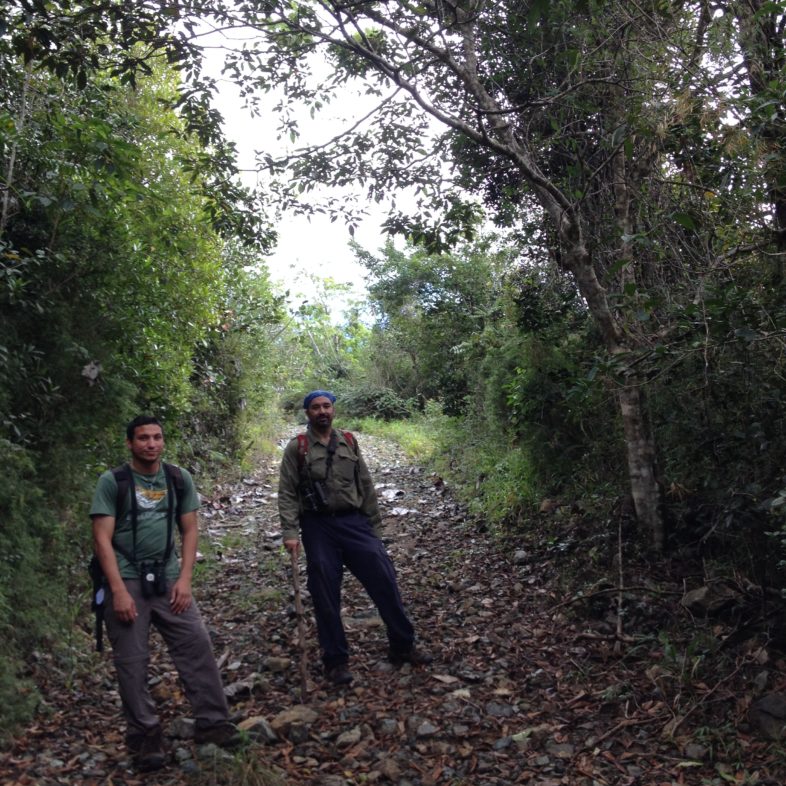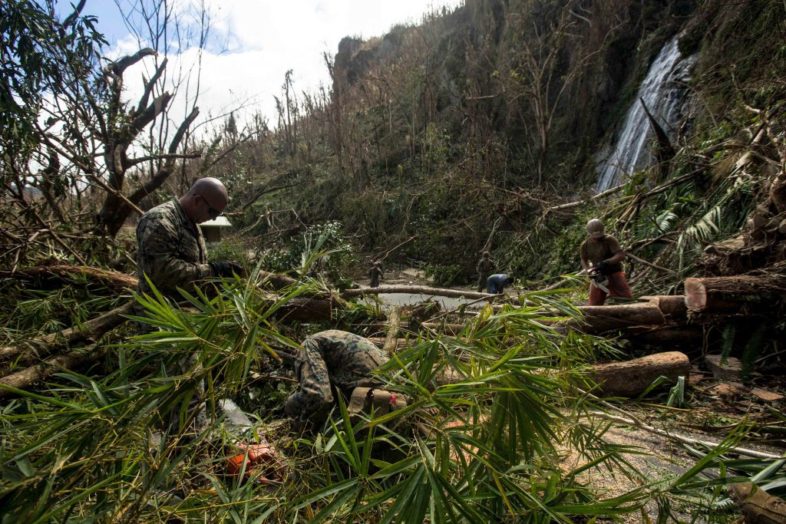
Jose Salguero (right) and Julio Salgado (left) in better days, surveying birds in the pre-Maria forests of Puerto Rico’s Maricao district, January 2015.
After scouring the island of Puerto Rico for Bicknell’s Thrush (BITH) with our partners from Sociedad Ornitológica Puertorriqueña (SOPI) during the winters of 2015-16 and turning up only 11 birds, VCE figured our work there was largely done. Our field surveys confirmed that BITH is rare and local on Puerto Rico, reaffirming for us the strategic importance of focused conservation efforts on Hispaniola – especially the Dominican Republic – which indisputably harbors the global motherlode of overwintering BITH. Throw in unanswered questions about the species’ status on Cuba and Jamaica, and we were hard-pressed to justify continued field research or monitoring on Puerto Rico (much as we might have liked to). So, we turned our attention to Cuba, where VCE is about to launch Year 2 of field surveys in Sierra Maestra with our partners at BIOECO.
Then Hurricanes Irma and Maria struck this past September. The one-two punch of these Category 5 mega-storms was cataclysmic – for humans, infrastructure, natural habitats, and very possibly for local birds. The devastating consequences for humans could not have been more apparent. For birds, other than a few high-profile and conspicuous local species like Puerto Rican Parrots, we simply don’t yet know. Direct mortality of most forest-dwelling birds may not have been extreme, but the medium-term survival consequences of severe habitat damage could be dramatic. Post-hurricane assessments on Puerto Rico and other hard-hit Caribbean islands have been identified as a high priority to inform recovery strategies and management.
Paradoxically, the destruction inflicted by Irma and Maria has created a once-in-a-lifetime opportunity to learn about the impacts of severe hurricanes on bird populations. Seizing on this, VCE is again teaming with SOPI to resurvey the 211 points at which we conducted detailed counts of all migrant and resident species three winters ago. Our SOPI colleague Jose Salguero is leading our collaborative study to repeat our 2015 counts at every point, or at least those that are still accessible. Results should tell us a great deal about short-term changes that have occurred, and serve as a post-hurricane baseline to monitor avian population responses over time. VCE’s role will be to manage, analyze and interpret the field data. It will be fascinating to see what Jose and his team find.
Speaking of our good friend Jose, read about his and other Puerto Rican birders’ impressive dedication to keep the local Christmas Bird Count tradition alive this past December, a mere three months after the hurricanes hit.

